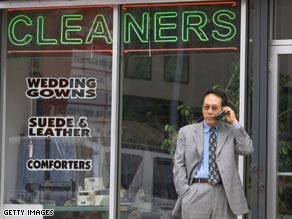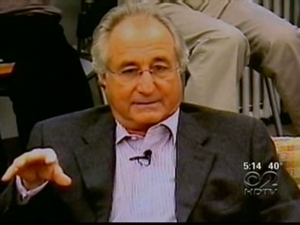Request After Auto Bailout Leads to Uncertainty Over How and When the Second $350 Billion Tranche Will Be Accessed
By DEBORAH SOLOMON and DAMIAN PALETTAWASHINGTON -- The U.S. government's rescue of the auto industry drained what remained in the first half of Treasury's $700 billion bailout fund, prompting Treasury Secretary Henry Paulson to call on Congress to release the rest of the money.
The move sets off a period of uncertainty for financial markets as the Bush administration and the Obama team scramble to determine how to proceed.
On Friday, Mr. Paulson said lawmakers should release the second $350 billion "to support financial market stability." He said he would discuss tapping the money "in the near future" with congressional leaders and members of President-elect Barack Obama's transition team.
Draining the current bailout fund raises the question of how the administration would handle an unexpected fiscal emergency. Mr. Paulson said in a statement Friday that Treasury, along with the Federal Reserve and the Federal Deposit Insurance Corp., has "the necessary resources to address a significant financial market event." While the first $350 billion has been allocated, not all of the money has been spent and Treasury could dip into the unused funds.
Mr. Paulson has not decided whether to formally request the second half of the Troubled Asset Relief Program -- known as TARP -- or leave that task to the Obama administration, according to people familiar with the matter. The White House suggested it may not make any requests before President George W. Bush leaves office, according to Deputy Chief of Staff Joel Kaplan.
But senior Democrats on Capitol Hill say they're expecting Mr. Bush to make a request in early January -- after Congress reconvenes, but before Mr. Obama takes office. Mr. Paulson would likely receive a rough reception, especially from his own party. He also would likely have to concede to such Democratic demands as a plan to help troubled homeowners, as well as tougher conditions for financial institutions that get government cash.
Mr. Paulson has so far resisted those efforts. But with his term drawing to an end, and a souring relationship with Congress, his stature on Capitol Hill has diminished.
House Financial Services Committee Chairman Barney Frank (D., Mass.) has previously said Mr. Paulson's ability to get that next $350 billion has "been destroyed" unless he agreed on a foreclosure plan that carried Mr. Obama's blessing. Mr. Frank said Friday he was in talks with his counterparts in the Senate, as well as the teams of Messrs. Paulson and Obama. He said he wanted Mr. Bush to request the remaining funds quickly.
"What I hope is we will have an agreement in early January about how the second 350 will be spent," Mr. Frank said. "Not to the penny, but in general. So that we will avoid the kind of fighting we had last time."
Obama officials said they will likely participate in negotiations if Mr. Paulson decided to request the second half of the funds. Under the legislation, the administration needs to lay out specific plans -- a financial strategy that would extend to the new administration.
Democratic lawmakers are angry the Bush administration resisted calls to embark on a large-scale program to prevent foreclosures, and that government-backed banks aren't lending more. Republicans, meanwhile, are upset about the shifting focus of TARP, a program they finally supported after a protracted fight that rocked financial markets. While Mr. Paulson initially planned to use the TARP to buy bad loans and other distressed assets, he changed gears to instead buy stakes in banks. Republicans blame the Bush administration's missteps for losing party seats in November.
"To say that he's burned bridges is an understatement," said Rep. Patrick McHenry (R., N.C.), a member of the House Financial Services Committee. "He was much more interested in cultivating the Democrats' support than ever building a relationship with Republicans."
In a sign of their cranky mood, the House Republican leadership recently released a letter critical of Mr. Paulson.
"Even direct inquiries from Congress seeking answers on behalf of concerned taxpayers do not appear to have been taken seriously," the letter said.
When Mr. Paulson met with House Republicans at a closed-door meeting in September to win support for the billion bailout package, lawmakers said his message was confused and muddled. Some members laughed derisively during his presentation, recalled Rep. McHenry. "There's nothing more insulting," he said.
The main gripe among Democrats was Mr. Paulson's refusal to use any money to prevent home foreclosures.
Rep. Marcy Kaptur (D., Ohio) said she tried for three weeks to get Mr. Paulson on the phone to discuss foreclosures in her district, which includes Toledo and Sandusky. She called Treasury on Dec. 11 and said she was going to deliver a list of 4,100 constituents who have lost their homes since Jan. 1.
Democrats want the rescue to include some version of a foreclosure-mitigation plan floated by FDIC Chairman Sheila Bair. Her plan is aimed at getting lenders to modify roughly two million mortgages, with the government sharing some of the losses if borrowers default on the new loans. Mr. Paulson argued the plan was too costly and could encourage banks to foreclose and borrowers to stop making payments to qualify.
Mr. Frank said some version of the Bair plan must be included to get Congress to approve release of more TARP money. He raised the possibility of a federal program to push mortgages to a 4.5% rate. Treasury has been mulling such a program, which would encourage banks to offer loans at a lower rate by guaranteeing that the government would buy the securities backing the loans at a price equal to the 4.5%. The Obama team is said to be interested in such a plan -- which could expand to include refinancing loans and new loans -- to help borrowers in danger of foreclosure.




![[Chart]](http://s.wsj.net/public/resources/images/P1-AO050A_TARP_NS_20081219202017.gif)

 Jason Sadler isn't anyone special. (His words, not mine.) But his new project,
Jason Sadler isn't anyone special. (His words, not mine.) But his new project, 


 Rick Wagoner,
Rick Wagoner,  Robert Nardelli,
Robert Nardelli,  Alan Mulally,
Alan Mulally,  Edward Liddy,
Edward Liddy,  Paula Rosput Reynolds, AIG: Reynolds is the vice chairman and chief restructuring officer of AIG. Like Liddy, Reynolds joined AIG in the fall of 2008 but will receive no salary for her work this year.
Paula Rosput Reynolds, AIG: Reynolds is the vice chairman and chief restructuring officer of AIG. Like Liddy, Reynolds joined AIG in the fall of 2008 but will receive no salary for her work this year. Richard Fairbank,
Richard Fairbank,  Steve Jobs,
Steve Jobs,  Sergey Brin, Larry Page and Eric Schmidt,
Sergey Brin, Larry Page and Eric Schmidt,  Terry Semel and Jerry Yang,
Terry Semel and Jerry Yang,  John Mackey,
John Mackey,  Jeff Katzenberg,
Jeff Katzenberg, 


